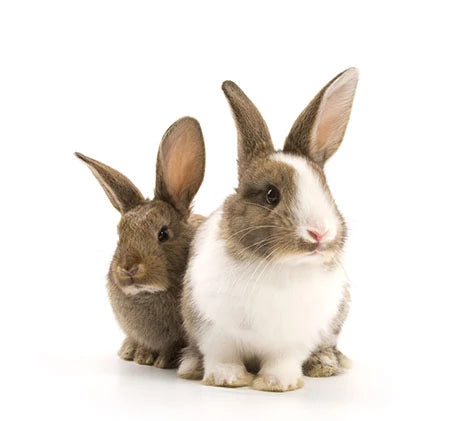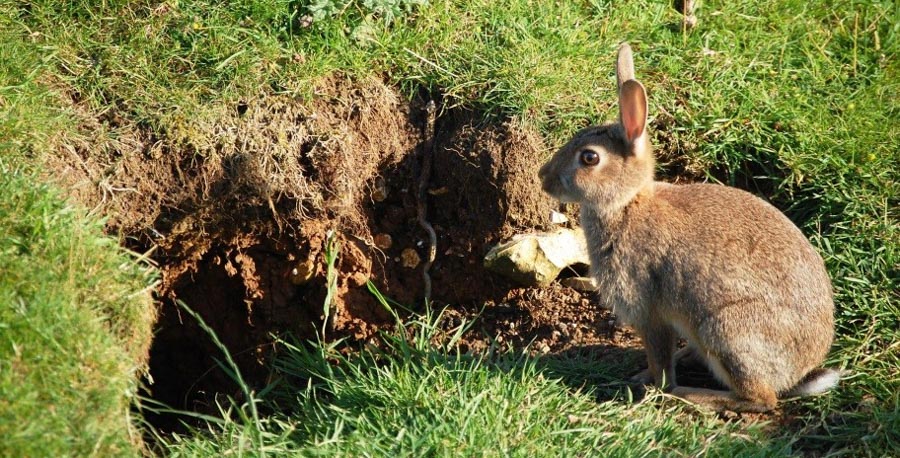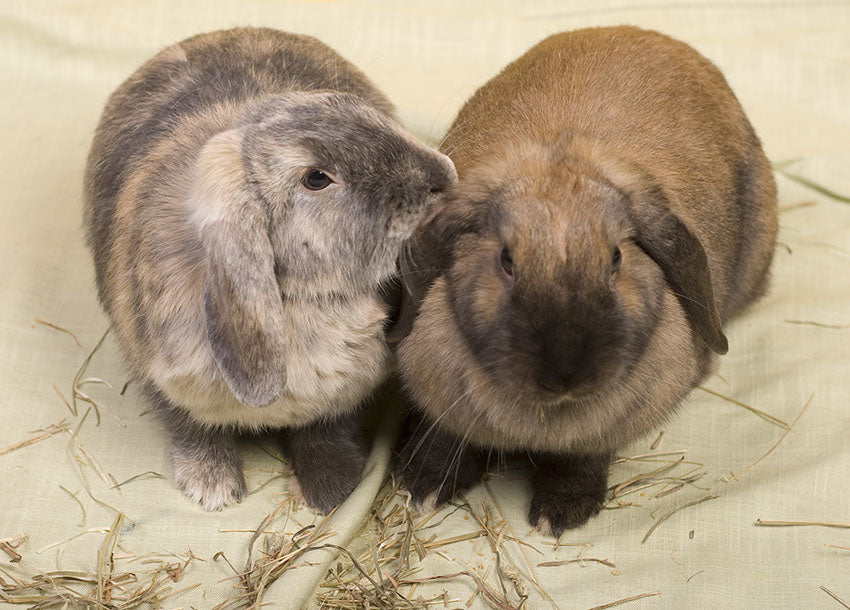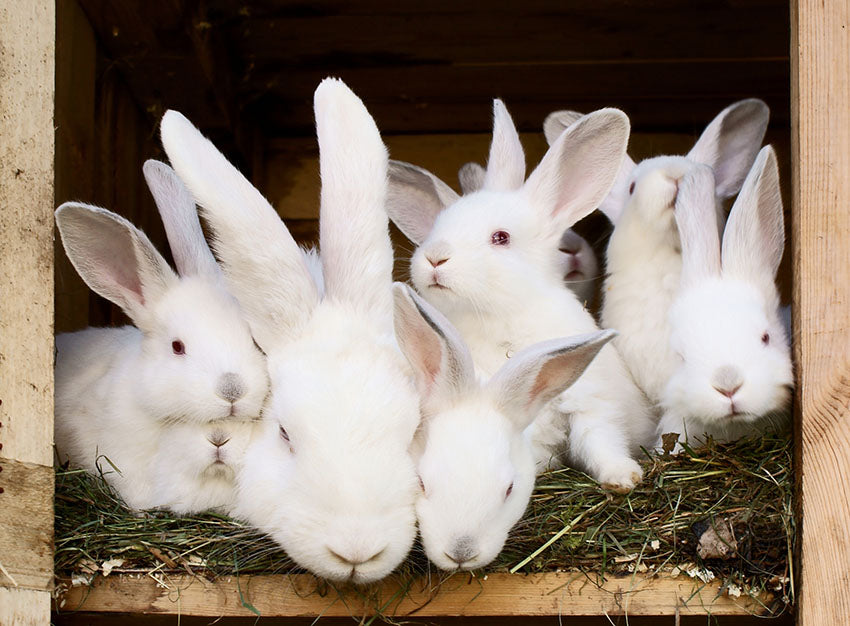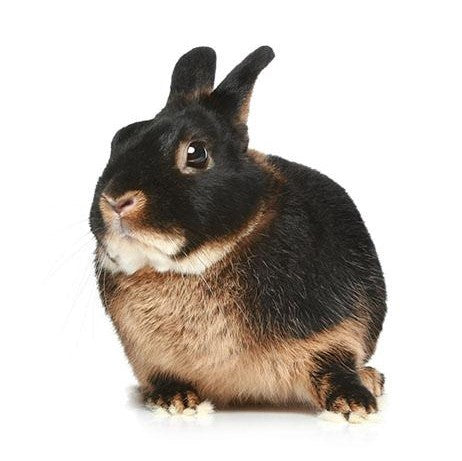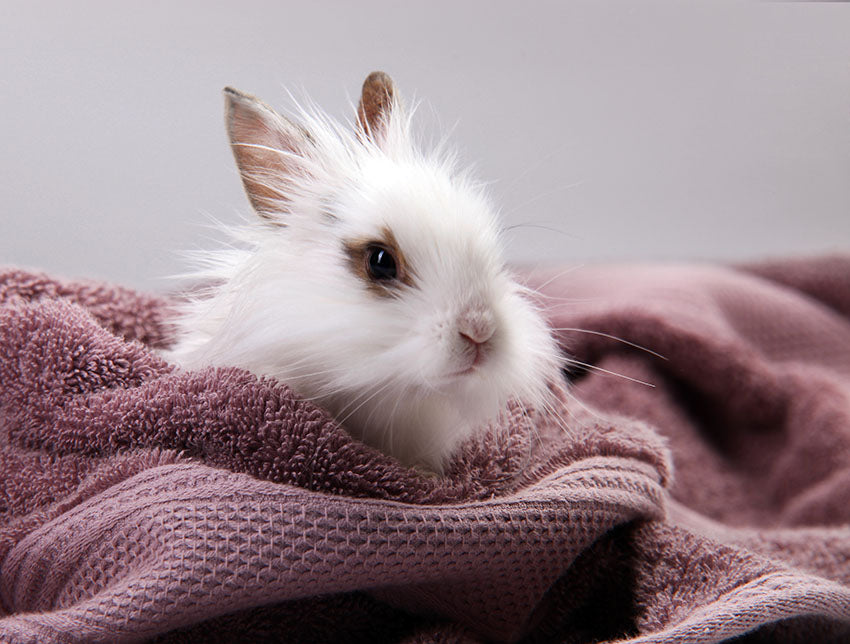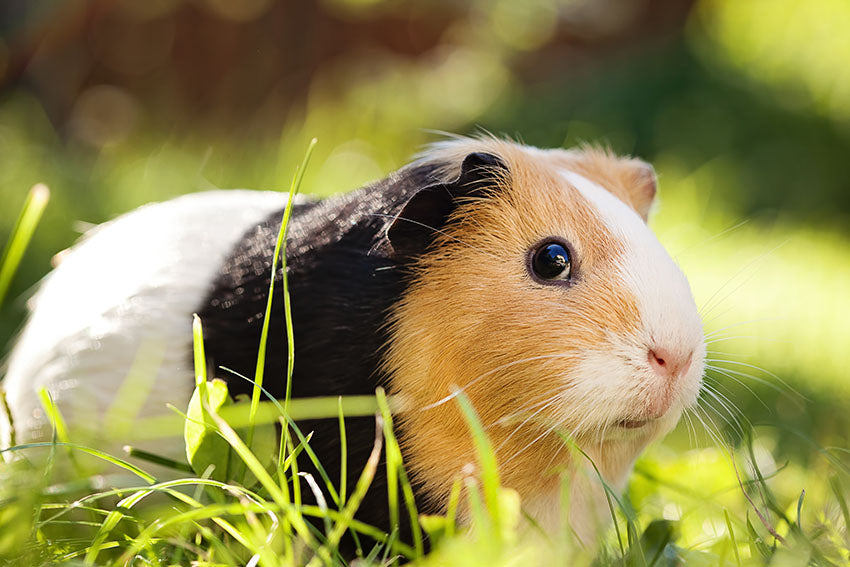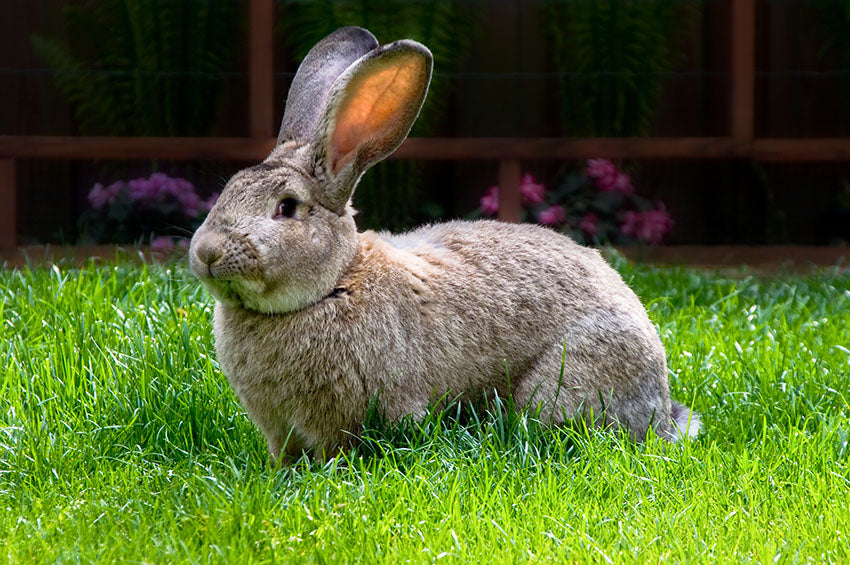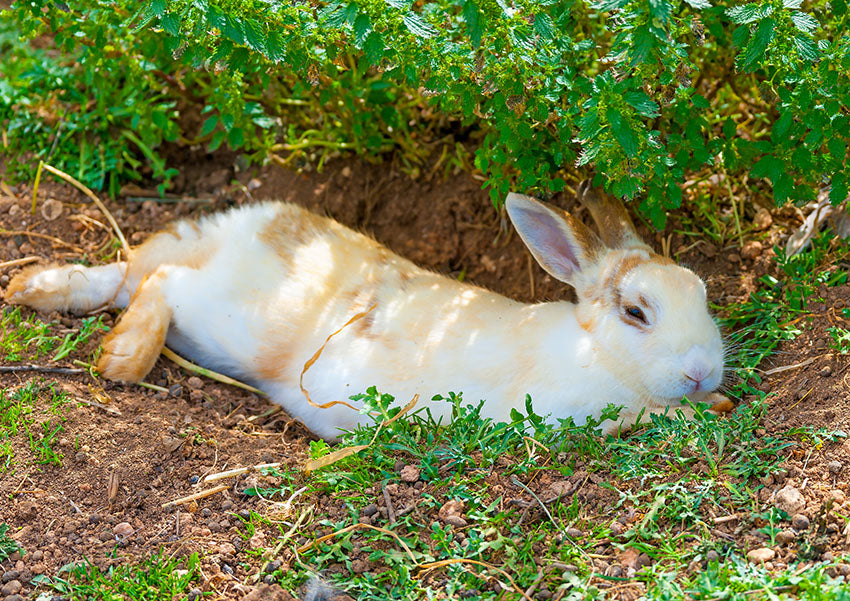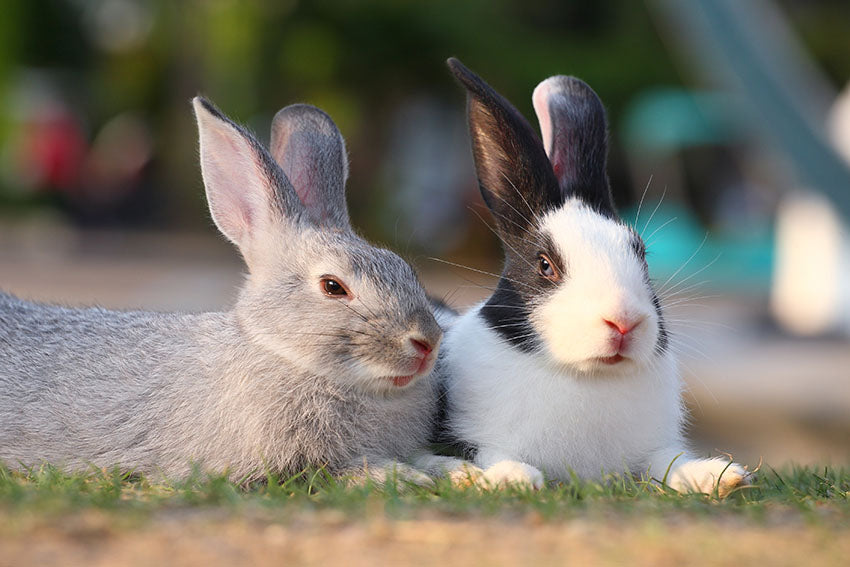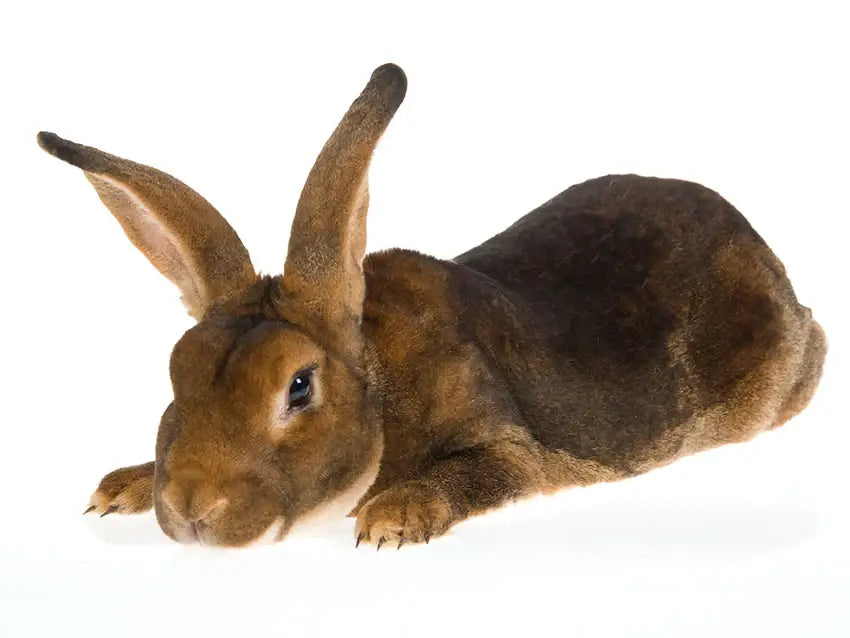The Basics of Keeping Rabbits & FAQs
Do you know your dewlap from your scut?! Or did you know that unchecked a rabbit's teeth will grow 5 inches a year?
Rabbits make wonderful pets for people living all over the world. Not only can they be fun, affectionate animals, but they are capable of developing strong bonds with their human owners. Rabbits are inquisitive, interesting and - at times - mischievous creatures, characteristics that have made them extremely popular amongst pet owners in lots of different countries.
This guide contains information about many different aspects of rabbit ownership, and is intended both to support you through the first steps of rabbit ownership, and to provide a dip-in resource for any questions you might have. The different sections offer information on a wide variety of topics, from choosing breeds, to performing health checks, right through to toys and treats. We hope you will find it useful, and that you enjoy caring for these fascinating animals.
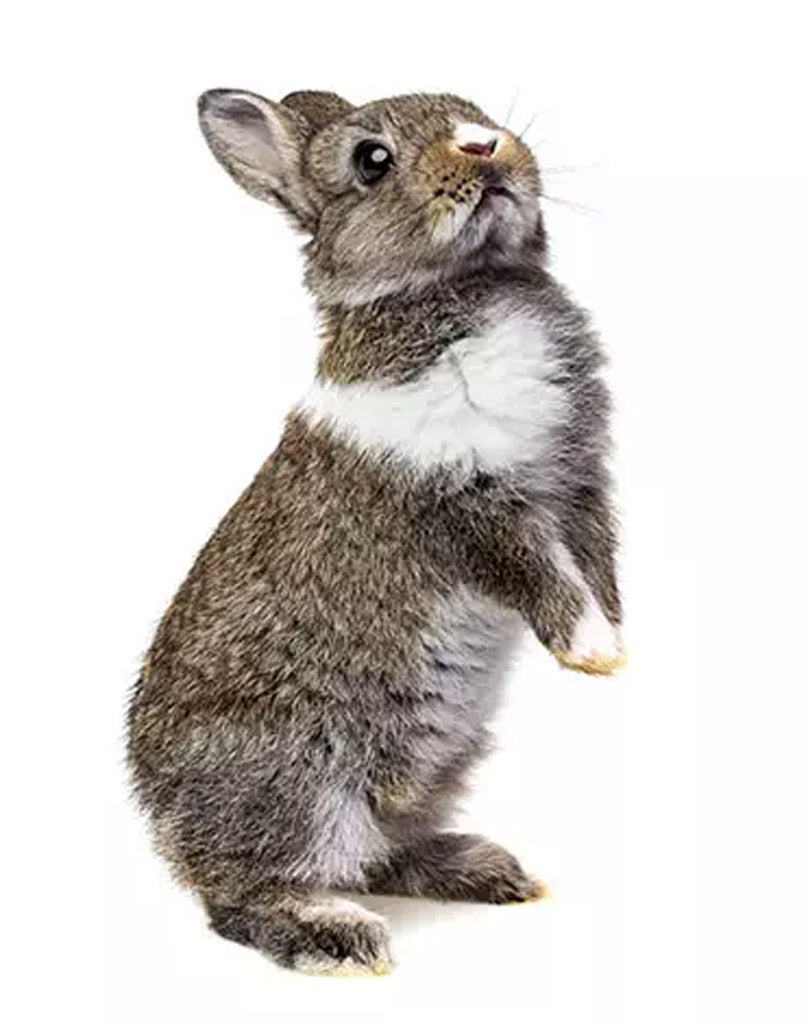



Rabbits come in a wide variety of different shapes and sizes - they make fantastic companions 🐰
World History
The original European wild rabbits evolved about 4,000 years ago in Iberia. In fact the visiting Phoenician merchants referred to part of Iberia as 'I-shephan-im' which means land of the rabbits. This was translated as 'Hispania' or as we know it - Spain. The scientific name for rabbits is 'Oryctolagus cuniculus' which sounds much more complicated than it actually is because it means 'a hare-like digger of underground passages'.
Life was peaceful for the rabbits until the Romans arrived in Spain during the Second Punic war in the 2nd century B.C. Much to the rabbits dismay the Romans quickly cottoned on to the idea of farming them in a practise known as cuniculture. The increasing trade amongst countries by sea and land helped to introduce rabbits to every continent except for Antarctica. Humans were now getting good at growing crops and as more land was cultivated into fields full of food, humans inadvertently provided rabbits with ideal habitats to live in. Combined with their famously fast breeding rate this ensured that they established themselves quickly wherever they went.


The domestication of rabbits is believed to have begun when medieval monks began to keep rabbits in cages for food. Newly born rabbits, Laurices, were not considered to be meat and were therefore allowed to be eaten during Lent. Monks tend to be dedicated fellows and it wasn’t long before they were studiously selecting and breeding rabbits to create new fur colours.
The industrial revolution meant many people moving from the countryside into towns and they brought their rabbits with them. As a pair of rabbits can produce up to 90kgs of meat a year they were an important source of food. But in the 19th century things started to look up for the rabbits as the Victorians began dabbling in breeding them for shows and competitions. Since then we have more or less sto
NZ History
Rabbits were initially brought to New Zealand in the 1830s for food, sport, and as a reminder of home for the European settlers. However, without natural predators in New Zealand, and with a climate and environment that proved favorable for their reproduction, the rabbit population quickly grew out of control.
The absence of predators like foxes, weasels, and other natural enemies that kept rabbit populations in check in their native Europe allowed the rabbits to thrive in New Zealand. Their impact on the ecosystem was severe, as they grazed on native vegetation, leading to soil erosion and ecological imbalance.
Efforts were made to control the rabbit population, including the introduction of natural predators like ferrets and stoats, as well as various methods of poisoning and fencing. These attempts had limited success, and the rabbit population continued to be a significant problem.

In the 20th century, the introduction of the myxoma virus in the 1950s and the rabbit calicivirus (Rabbit Hemorrhagic Disease Virus, RHDV) in the 1990s were attempts to control the rabbit population. While these diseases initially caused significant declines, rabbits developed some resistance over time, and their populations rebounded.
The battle against rabbits in New Zealand continues, with ongoing efforts to find effective methods of control. The impact of rabbits on the environment and agriculture remains a significant concern, and various strategies are employed to mitigate their effects on the ecosystem.
Rabbits are mammals, just like us humans - there are a few big differences, though!
Rabbits from Top to Tail
It's a big world out there so rabbits have developed some extraordinary features that have helped them survive and thrive in the wild. You can see these behaviour patterns and features too, if you spend a while watching your own rabbits.

Ears
With their big ears rabbits obviously have good hearing but even better than that they can move their ears independently allowing them to pinpoint danger from any direction.
Eyes
Rabbits also have big eyes.
A rabbit's eyes protrude from the side of its head which gives them near 360' vision - the one area they can't see is right in front of their own nose!
To 'see' whether something is edible a rabbit will touch the object with their sensitive top lip.
Teeth
Rabbits teeth are always growing to cope with all that gnawing.
In fact, if they didn't wear them down by eating grass, they could grow up to 5 inches a year!
This is why feeding your rabbit a lot of hay is the best way of keeping their teeth in good condition.
The presence of their 'peg' teeth makes them, along with Hares, stand apart from other rodents in their own sub-order 'Lagomorph'.
Nose
Why does a rabbit's nose twitch?
It's so that all of the highly sensitive receptors are exposed to the air.
A sign that a rabbit is very relaxed is that its nose stops twitching as this is one of its many ways of detecting imminent danger.
Digestion
Rabbits - the ultimate in grass nutrient extraction!
Rabbits have a two stage digestive system.
After the chewed food passes from the upper digestive tract where it's been mixed with stomach juices into the lower digestive system,
the fibrous material is taken straight out and is turned into what we recognize as rabbit droppings - little fibrous balls.
The rest of the mixture i.e. the liquid and the non-fibrous bits go on to the caecum - a big fermentation tank,
where lots of bacteria work at releasing all the goodness from the plant matter.
Most of this is then packed up into pellets called caecotrophs that the rabbit eats straight from its bottom!
At the second time of eating many more nutrients are absorbed after the bacteria from the caecum has had time to act.
Back
Rabbits have a relatively weak back and because of the strength in their back legs, they can cause themselves considerable damage.
Make sure children are supervised when they handle their rabbit and can properly support its back and legs.
Rabbits will struggle if they feel insecure.
Don't forget that rabbits prefer interaction at ground level as this is their natural environment.
Legs
With extremely powerful back legs rabbits can perform big jumps and dig big holes.
If they are in danger a sudden whack on the ground can make a surprisingly loud noise alerting another rabbits to the problem.
Tail
Also known as a 'scut' the rabbit's tail is more than decoration!
In wild rabbits the underside is pale and is used as a danger signal and for communication when several rabbits are feeding over a big area.
Frequently Asked Questions
Omlet design awesome rabbit environments that will bring you closer together by making the most of your space, to create habitats rabbits can relax and thrive in.




Swipe for more


